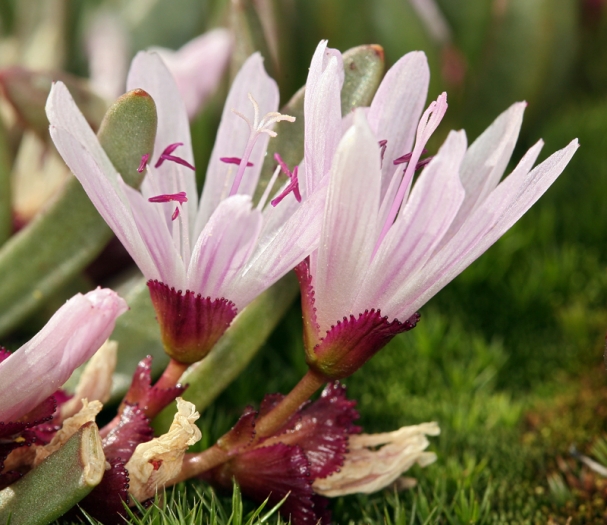Truckee Lewisia
(Lewisia longipetala)
Truckee Lewisia (Lewisia longipetala)
/
/

Steve Matson
CC BY 4.0
Image By:
Steve Matson
Recorded By:
Copyright:
CC BY 4.0
Copyright Notice:
Photo by: Steve Matson | License Type: CC BY 4.0 | License URL: http://creativecommons.org/licenses/by/4.0/ | Rights Holder: Steve Matson | Publisher: iNaturalist | Date Created: 2011-09-25T11:38:10-07:00 |














Estimated Native Range
Summary
Lewisia longipetala, commonly known as Truckee lewisia or long-petalled lewisia, is a rare perennial herb endemic to the high-elevation rocky outcrops and talus slopes of the Sierra Nevada in California, particularly near Lake Tahoe. It is adapted to subalpine and alpine climates, often found in moist, rocky habitats with persistent snow patches. This plant typically forms a basal rosette of fleshy, evergreen leaves and produces showy pinkish to white flowers with long petals, each up to 1 inch long, and tipped with distinctive resin glands. The flowering season occurs in late spring to early summer, depending on snowmelt timing.
Truckee lewisia is valued for its striking flowers and resilience to cold, making it a choice plant for rock gardens, alpine collections, and as a ground cover in suitable climates. It requires excellent drainage and prefers a gritty, rocky substrate, mimicking its native talus habitats. While it can tolerate high moisture levels during the snowmelt period, it is important to avoid waterlogged conditions during the growing season. Full sun to part shade is ideal for this species. In cultivation, it is also appreciated for its low maintenance needs and its ability to withstand cold temperatures. However, it can be susceptible to root rot if drainage is inadequate.CC BY-SA 4.0
Truckee lewisia is valued for its striking flowers and resilience to cold, making it a choice plant for rock gardens, alpine collections, and as a ground cover in suitable climates. It requires excellent drainage and prefers a gritty, rocky substrate, mimicking its native talus habitats. While it can tolerate high moisture levels during the snowmelt period, it is important to avoid waterlogged conditions during the growing season. Full sun to part shade is ideal for this species. In cultivation, it is also appreciated for its low maintenance needs and its ability to withstand cold temperatures. However, it can be susceptible to root rot if drainage is inadequate.CC BY-SA 4.0
Plant Description
- Plant Type: Succulent
- Height: 0.3-0.5 feet
- Width: 0.3-0.5 feet
- Growth Rate: Slow
- Flower Color: Pink, White
- Flowering Season: Spring, Summer
- Leaf Retention: Evergreen
Growth Requirements
- Sun: Full Sun, Part Shade
- Water: Medium
- Drainage: Fast, Medium
Common Uses
Border Plant, Butterfly Garden, Drought Tolerant, Fire Resistant, Low Maintenance, Rock Garden, Showy Flowers
Natural Habitat
Endemic to high-elevation rocky outcrops and talus slopes of the Sierra Nevada near Lake Tahoe
Other Names
Common Names: Long Petal Bitterroot , Long-Petaled Lewisia , Pink Bitterroot
Scientific Names: Lewisia longipetala , Calandrinia longipetala , Lewisia pygmaea subsp. longipetala , Oreobroma longipetala
GBIF Accepted Name: